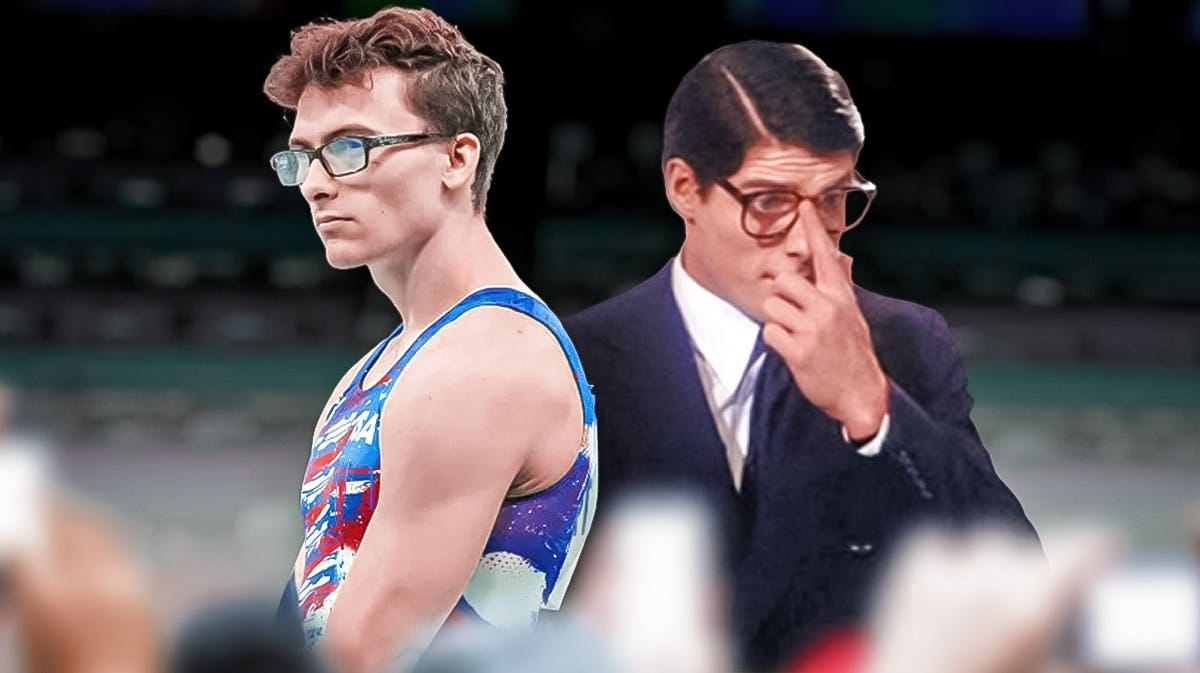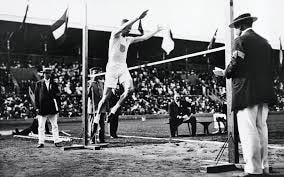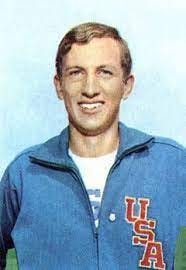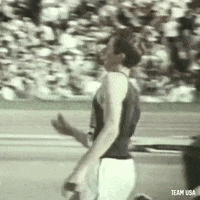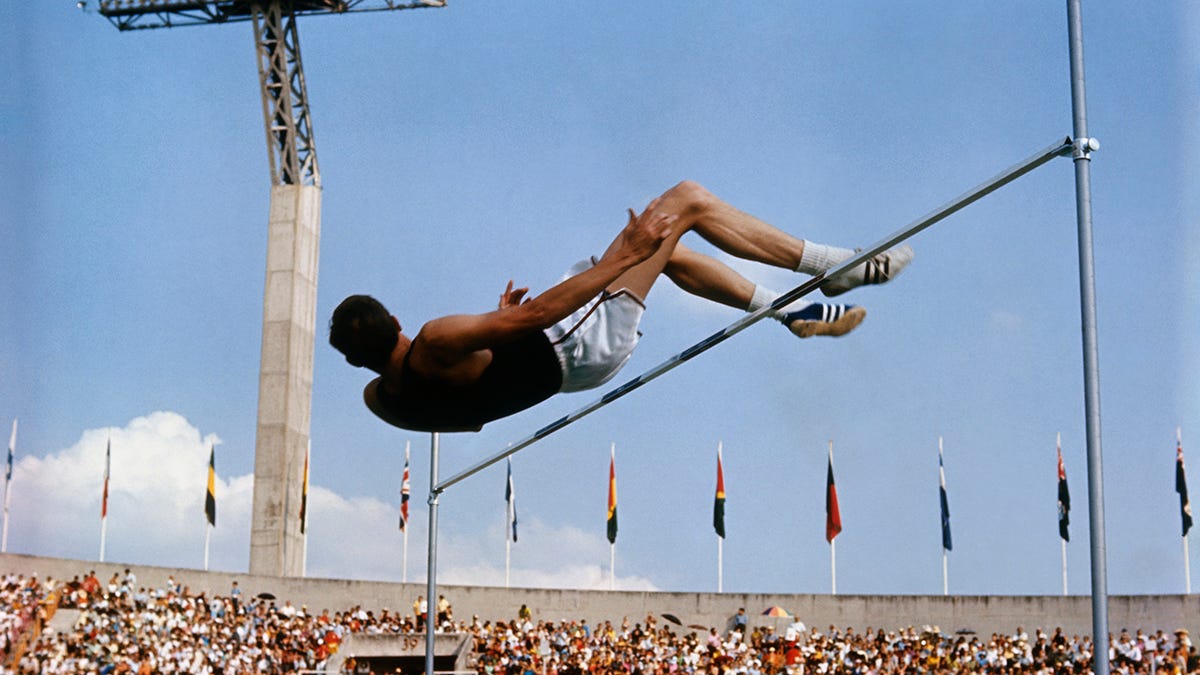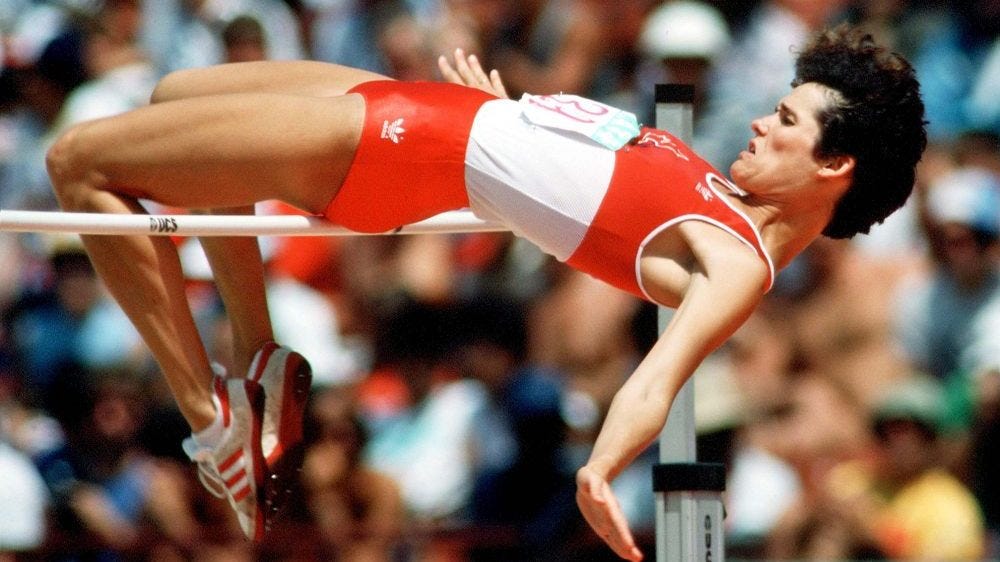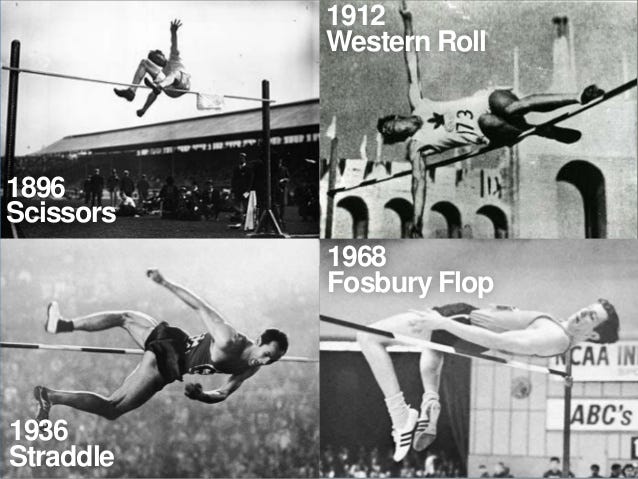Are you watching the Olympics?
I love the Olympics!
Sports, drama, stories…so much good stuff!
I signed up for Discovery+ purely to get the Olympics action this year, and instead of crumbs from BBC1, I’ve been able to enjoy so many sports already —swimming, gymnastics, water polo, diving, basketball, rugby…
If you missed “pommel horse guy” Stephen Nedoroscik pull a full Clark Kent/Superman transformation, I highly recommend a watch2.
The Paris Olympics feature 32 sports, including four that join the competition for the first time: skateboarding, sport climbing, surfing, and breaking (as in break dancing).
It’s interesting to think about how the sports that are featured evolve over time — and also how the sports themselves evolve.
And when I heard that the high jump changed drastically in the 1968 Olympics, I was curious…
In 1963, Dick Fosbury had a problem.
He was competing in the high jump for his high school track team, but he was terrible at the traditional methods for clearing the bar.
But he realized that if he stretched out on his back and landed headfirst, he could jump higher than anyone else on the team.
“The advantage from a physics standpoint,” he said, “is it allows the jumper to run at the bar with more speed and, with the arch in your back, you could actually clear the bar and keep your center of gravity at or below the bar, so it was much more efficient.”
At that time, competitors would clear the bar using a scissors or straddle-style forward kick, drastically different from the method Fosbury was trying.
A year later, an Oregon newspaper wrote that Fosbury looked like “a fish flopping in a boat” when he did his jump, and ran a photo with the caption “Fosbury Flops Over Bar.”
From that point, his high jump method was referred to as the “Fosbury Flop.”
Other coaches and competitors criticized Fosbury’s method, but he wasn’t trying to change the sport.
He was just trying to compete.
“What I had developed worked for me,” he said.
“The criticism of other coaches and other experts didn’t really matter as long as I was meeting the rules and the standards.”
Fosbury placed third at the US Olympic Trials, good enough to qualify to represent the USA at the 1968 Olympics in Mexico City – though hardly making him the favorite.
But on October 20, 1968, Fosbury showed the world his Flop.
And he flopped his way to a high jump of 7 feet 4 1/4 inches – taking home the gold medal and setting a new Olympic record.
It was the first American victory in the event since 1956, and also the international debut of Fosbury’s unique jumping style.
“I think quite a few kids will begin trying it my way now,” he said when the Games were over.
“I don’t guarantee my results, and I don’t recommend my style to anyone.
“All I say is if a kid can’t straddle, he can try it my way.”
Kids everywhere began to practice the Flop over the backs of their sofas and into piles of leaves in the yard.
Fosbury’s Flop soon became standard practice at track meets, and within a decade, almost every elite high-jumper was doing it Fosbury’s way.
And Fosbury acknowledged that he was not the only person experimenting with a backwards jump in the 1960s.
While he was flopping in Oregon, Debbie Brill was competing with a similar technique (known as the ‘Brill Bend’) in Canada.
At age 16, Brill became the first woman in North America to clear 6 feet.
Her reverse jumping style (similar to Fosbury’s) led her to win her first Commonwealth Games gold medal in 1970.
And like Fosbury, she faced resistance for her approach.
“There’s a lot to be said for not being told how to do things,” Brill said.
“Back then, the sport was not as mainstream as it is today, and we had to make it up as we went along.
“I was left to my own devices and part of my talent was that I was able to be completely in the moment of the jump.”
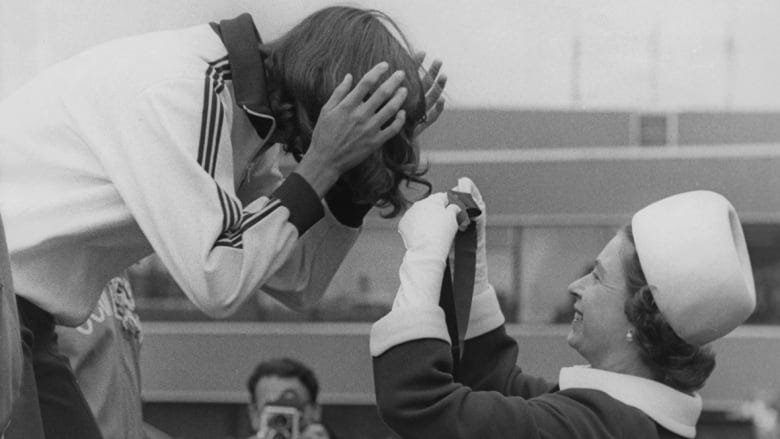
Brill represented Canada in three Olympic games, and was ranked #1 in 1979.
She might have taken home a medal the next year, had it not been for the 1980 Summer Olympics boycott.
Brill has held the Canadian National high jump record since 1969 — and set the current record of 1.99 meters in 1982, just months after giving birth to her first child.
Dick Fosbury lived to see his high jump technique adopted by 28 of 40 competitors in the 1972 Olympics — and become the most popular technique for high jumping.
He passed away in March 2023, but his creative approach to the high jump lives on — just as Brill’s does.
And this month, we’ll find out which women and men will flop and bend their way to the gold!
One more thing…
Check out how the men’s high jump has evolved:
Here are some images that show how the high jump strategy has changed:
And one more…
Here’s a wonderful moment from the high jump at the 2021 Olympics, when two athletes were both awarded gold medals:
Recent Work and Writing
In Defense of the “Childless Cat Ladies” — Why do some people think it’s appropriate to opine on a woman’s reproductive status?
How can I help?
I’ll keep saying it: Communication matters.
If you want to improve your communication (and get all the good things that come with that), I’m your gal.
So many companies could reap massive rewards – from performance and culture to retention and engagement – by improving their communication.
So, if you know someone who could benefit from some help (as even the most seasoned leaders do), please get in touch and check out my website for more information.
You can also see my Top 10 list of what I can (and can’t) do for you here.
And if you see any communication examples (the good, the bad, and the ugly) that you think are worth analyzing or sharing, please send them my way!
Stay Curious!
-Beth
It is hard to be a fan of Team USA watching the Olympics from outside the US. But not this year!
I can’t find a link to share on YouTube. You might need a Peacock/Discovery+ subscription to view it…


